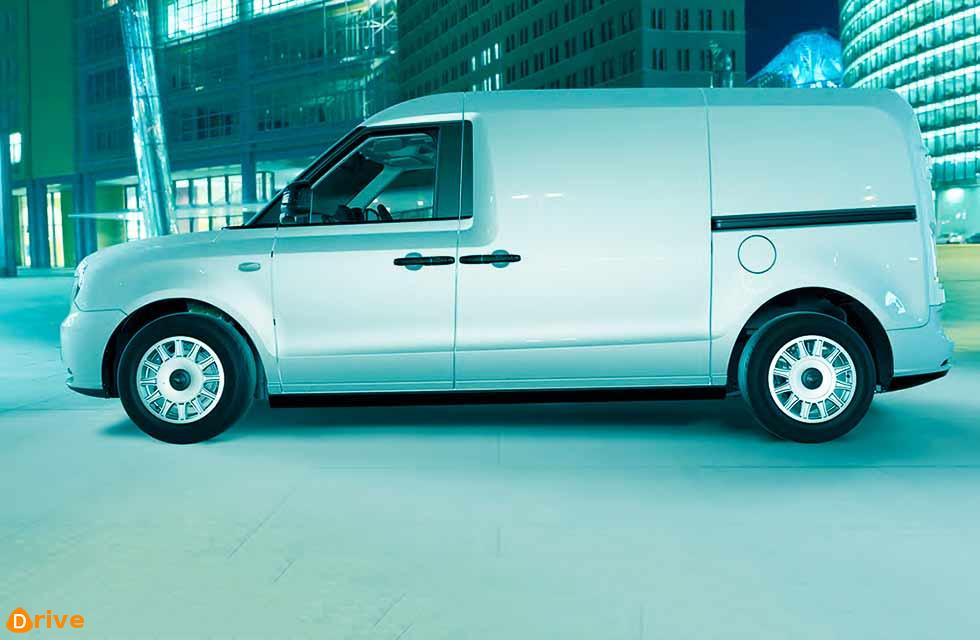Building on the development of the TX range-extended electric taxi, LEVC is turning its expertise to its second vehicle. Words: Matt Ross.
Commercial sense
TECH INSIDER LEVC LCV
The second vehicle from LEVC will enter customer trials in the latter half of 2019, and will provide valuable data on driving cycles and powertrain calibration. The electric, range-extended light commercial van is based on the technology developed for the TX taxi, which means much of the testing and development knowledge can be carried over. But, as Ian Collins, CEO of Emerald Automotive (a wholly owned subsidiary of Geely), explains, there’s valuable insight to be gained from real-world feedback that will enable the van’s powertrain to be carefully calibrated to suit the different requirements of delivery vehicles.

“We developed a powertrain that is suited to a very particular drive cycle in the taxi. The van needs to be able to do longer runs at higher speeds, but fundamentally it’s about optimizing it for stop/start conditions – many stops by the side of the road, many pick-ups. A lot of that learning will carry through from the taxi to the van, given the type of duty cycle that we have in mind. Having developed a powertrain that is proving itself in one of the most demanding applications you can think of gives us a very good starting place for the van. What we really need is the overlay of the data we get from the consumer trials to make sure that we optimize the calibration for that particular use.”
The van powertrain uses much of the same hardware as the TX. The e-motor, developed by Siemens, drives the back wheels. A 31kWh LG Chem battery and GKN Driveline coaxial-design electric axle are also carried over, and the three-cylinder Volvo-designed, Geely-produced ICE continues to serve as the range extender – with no direct link to the wheels, meaning the van will be electrically driven at all times.
“What will be different is the calibration of the system, in terms of driveability – the calibration of how the controls relate to the operation of the powertrain, and the strategy of how the range extender works,” Collins says. “You try to use it as little as you possibly can. But if what you’re trying to do is save energy for a particular part of the drive cycle, you can control that manually (operated by the driver), but there are also ways of looking at it from an automated standpoint. That’s part of the work that we are currently doing.”
Alterations to the packaging of the powertrain have been confined to rearward of the B pillar. In the TX, the fuel tank fits under the rear seats, but the van called for a low, flat floor with minimal wheel arch intrusion. The fuel tank has therefore been packaged into the area just forward of the rear axle.
Carrying capacity
The specific demands on the powertrain in the van, Collins explains, should also bear some similarities to the TX – part of the rationale of carrying the hardware over. But there will be differences, and the customer trials will provide more useful data in that respect.
“Van users are often going to be carrying heavier loads for longer – high-load situations, close to gross vehicle weight, climbing hills and the like. I expect that to be the main difference. You can test for that, and look at worst cases, but it will be interesting to see what the loading conditions are when we start to get data in.”
The TX has made development on the van easier, and the benefits of the extensive testing program for LEVC’s first vehicle promises to do the same for future applications.
“The first mules for the van were converted taxis,” says Collins. “We know the wheelbase is a little longer, and the load distribution is different, but [we had] something that is proven in a very demanding application. We could take the existing hardware, modify it relatively simply and start testing it straight away.
“All manufacturers think about platforms and how they can reuse the development they’ve done on one vehicle and use it in others. The range of options in front of us is wide, but we’ve got to – as a relatively small player in the market – grow one step at a time.”
The LEVC van’s electric powertrain is supported by a petrol range extender. Development has been aided by expertise honed on the TX taxi (below)





